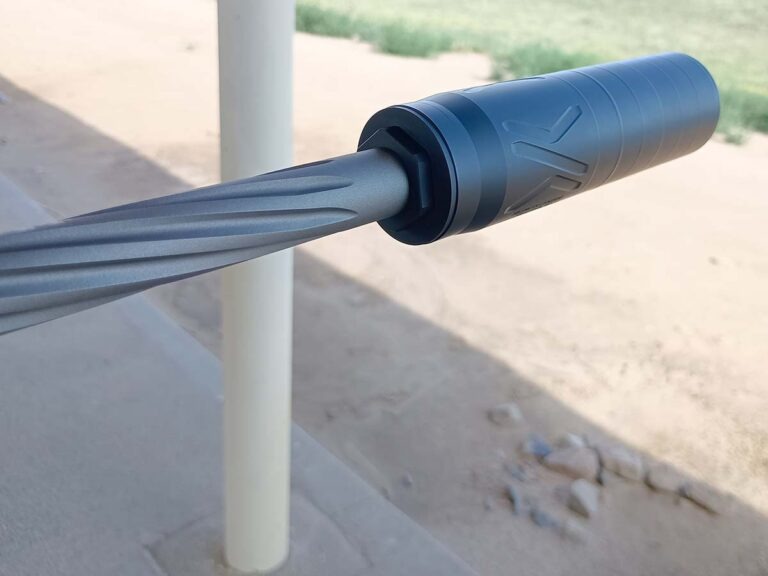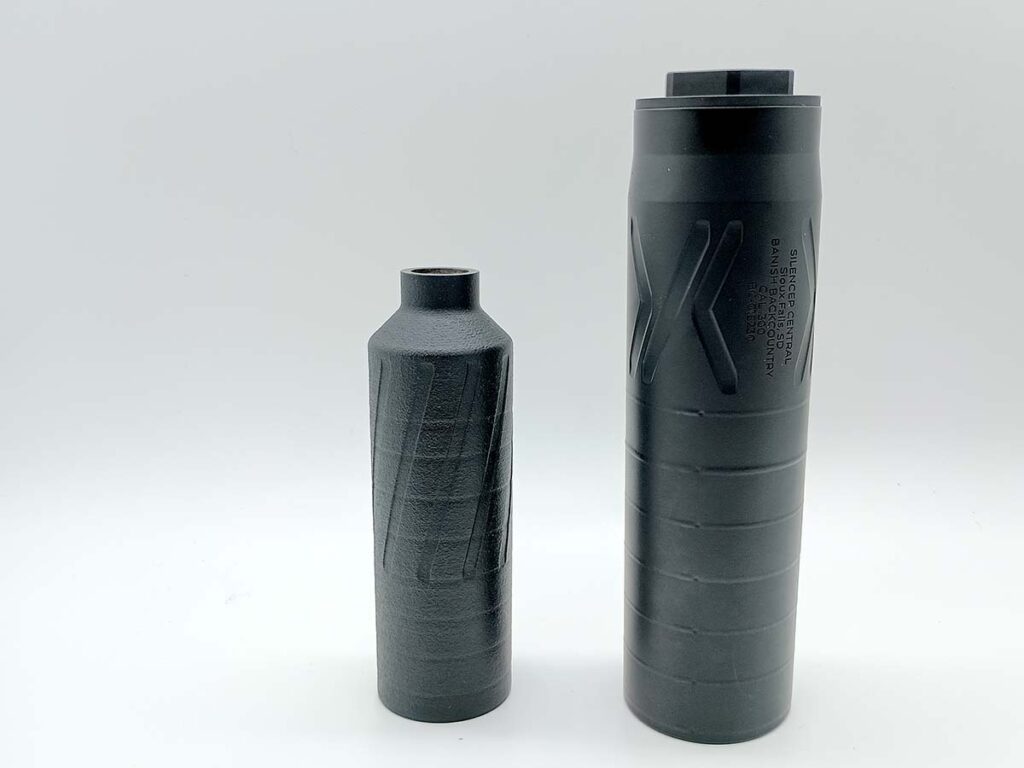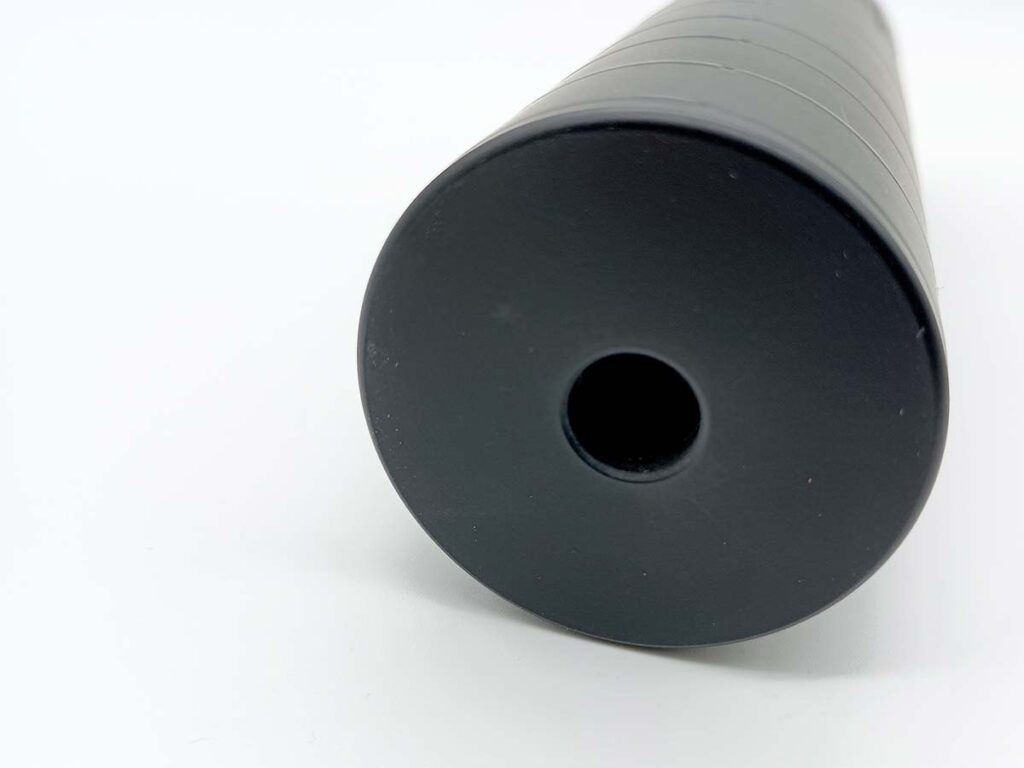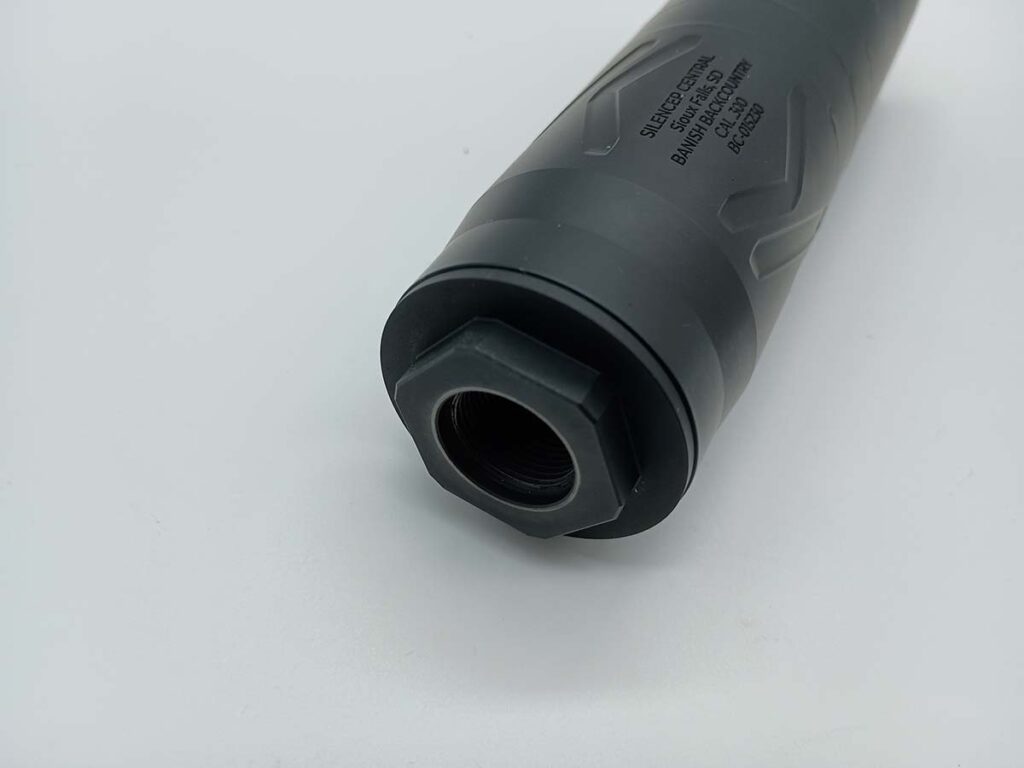
Lightweight, rugged, and rated up to .300 RUM, the Banish Backcountry is the suppressor built for serious hunters who demand performance without added bulk.
Lately, suppressors have stolen the spotlight in the firearms world. Though one area has stayed relatively immune to the muzzle device’s breakout popularity, hunting.
Don’t get me wrong, varmint and hog hunters have always appreciated what cans bring to the table. Picking off more porcine because you’ve hushed up your rifle enables a quick learning curve. Deer, elk and even antelope hunters, however, have been reluctant to expand their horizons.
It’s a pity, given what a new generation of hunter-tailored suppressors brings to the table. This gets to the rub of why I’m writing—the Silencer Central Banish Backcountry suppressor. Created with western-style hunting firmly in mind, the can aims at being a do-all in the backwoods. And after spending the better part of the summer running it on different hunting rigs, I’d say it hits the bullseye.
Banish Backcountry Specs
Length: 5.5″
Diameter: 1.6″
Weight: 7.8 oz
Material: Titanium
Thread Pitch: 5/8×24
Self-service: No
Caliber:.300
Caliber range: Up to 300 rum
Color: Black, Tan, OD Green, Burnt Bronze, Tungsten, coyote tan
Finish: Cerakote
Sound Reduction: 30 dB
Mount style: Direct Thread Universal hub
Full-auto rated: No
MSRP: $1,099
Pros
- Lightweight
- Excellent Recoil Reductions
- Versatile Mount Options
Cons
- Not User Serviceable
Banished Into The Backcountry
For anyone following the developments at Silencer Central, Banish is a familiar name. This is the company’s in-house suppressor line, which over the years has become synonymous with performance at a fair price. They aren’t the cheapest on the market, but for the money they demand, the cans punch above their weight.

Despite the line’s performance, the rifle suppressors didn’t exactly qualify as hunting can, except incidentally. Mainly constructed from stainless steel, they were heavy. But in recent years, Silencer Central has made a big push into titanium suppressors—a boon for anyone concerned about weight.
This plays out hugely for the Backcountry. At 7.6 ounces, the all-titanium suppressor is among the lightest for its size in Silencer Central’s catalog. That’s saying a mouthful, because it’s small for a rifle suppressor—really small. The can only tacks on 5.5 inches (5.7 inches with mount) to the overall length of the rifle and is relatively slim at 1.6 inches in diameter. For some rifles, that’s slender enough to use open sights—if one were so inclined.
Nice as all these aspects are, the mind-blowing aspect of this is that the Backcountry is engineered to handle some pretty rough-and-tumble cartridges. The can is rated up to .300 RUM; in turn, the .300 Winchester Magnum, 7mm Magnum and the .30-caliber and smaller PRC and Nosler cartridges are all fair game. Sorry, .338 fans, you’ll just have to take something smaller to Alaska.
Banish Backcountry Construction
Strong and light as titanium is, it’s a difficult material to craft. Silencer Central has done a solid job in this department, particularly given its welded baffle design.

I’m no metallurgist or fabricator, but the welds were uniform and through 100-plus rounds of 7mm PRC showed no issues in strength—more on that later. As for its internal construction, it’s a six K-baffle design, with an ample blast chamber. Given it’s welded, this is not a user serviceable suppressor—somewhat.
Silencer Central, wisely in my opinion, runs a 1.375×24 universal mount that gives some access to the interior. At least if you give the Backcountry an ultrasonic bath, it’s easier to get everything drained off, including the carbon filth.
The mount that comes with the suppressor has a 5/8×24 thread pattern, making it compatible with a majority of hunting calibers. However, the mount can be switched out, essentially making it compatible with any caliber for which the can is rated. Or, you can go for a QD mount, if that’s your cup of tea.
Backcountry Range Performance
The Backcountry, being targeted at hunting, I ran it on what I would call a blue-collar long-range setup—a Ruger American Gen II, as mentioned, in 7mm PRC. For those living under rocks, the PRC family of cartridges are beltless magnums and a good option to see the overall performance of the Silencer Central suppressor.
Overall, it was dynamite.

As for sound suppression, the Banish hunting can put a big dent in the report of the Ruger. Unfortunately, I don’t have the equipment to verify the dB reduction on the can, but it was substantial compared to the rifle unsuppressed.
For the record, Silencer Central lists the Backcountry will reduce a similar cartridge—the .300 Winchester Magnum—to 137 dB. That’s still not safe for unprotected ears, but substantial enough to make a rifle more pleasurable to shoot.
Recoil mitigation—the more important aspect of a hunting suppressor, in my book—was impressive. I had a good benchmark, given the American Gen II comes with a muzzle brake that itself does a fairly good job of taming the buck 7mm. However, the Backcountry does even better, cooling the kick down to around that of a .270 Winchester out of a rifle the same, by my estimations.
Overall Take
Recoil mitigation alone, the Banish Backcountry hits the mark. Elk, deer, moose, what-have-you season, often you only have one shot to put meat on the table and a rack on the wall. A device that can reduce the potential of flinching is worth its weight in gold.
Given Silencer Central has shaved down the mass of the Backcountry to make it a feasible addition to a mountain rifle, it’s worth more. For many hunters, suppressors are untrodden and untested territory—especially for those who hike back a few ridgelines. The Backcountry should change this in a big way, with an adaptable, functional and, above all, lightweight option.
The suppressor certainly has what it takes to change the game on the hunt.
More On Suppressors:
- Silencer Central Banish 9K Review: One Compact Can
- 3D Printed Suppressors: All The Cans That’s Fit To Print
- Concierge Cans: How Silencer Central Drops Cans at Your Door
- Aero Precision Lahar 30L Review: Supersized Performance

![Best Concealed Carry Guns In 2025 [Field Tested] Wilson Combat EDC X9S 1](https://gundigest.com/wp-content/uploads/Wilson-Combat-EDC-X9S-1-324x160.jpg)


![Best 9mm Carbine: Affordable PCCs [Tested] Ruger Carbine Shooting](https://gundigest.com/wp-content/uploads/Ruger-Carbine-Shooting-100x70.jpg)
![Best AR-15: Top Options Available Today [Field Tested] Harrington and Richardson PSA XM177E2 feature](https://gundigest.com/wp-content/uploads/Harrington-and-Richardson-PSA-XM177E2-feature-100x70.jpg)
